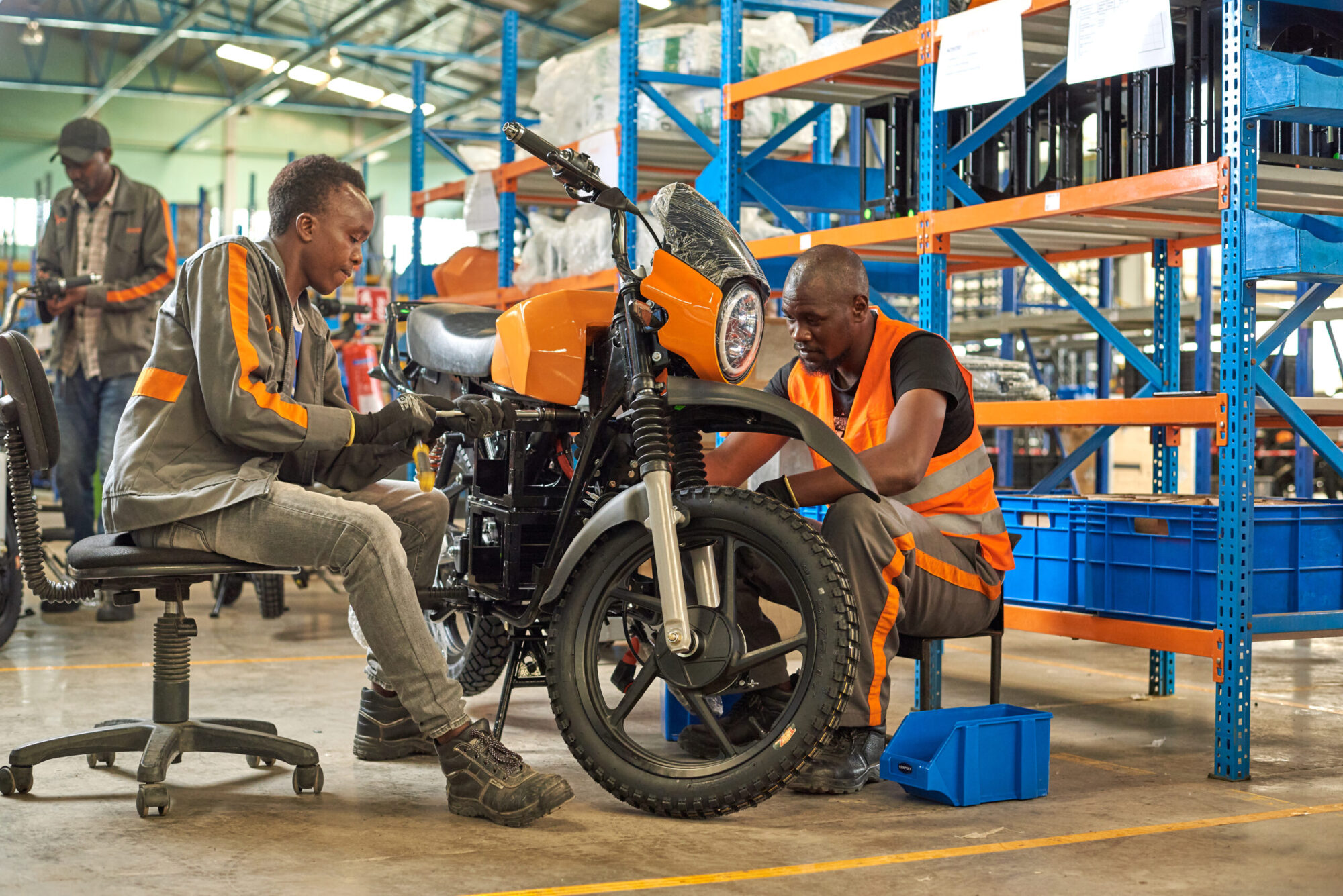Sign up for daily news updates from CleanTechnica on email. Or follow us on Google News!
While the US EV market continues to be dominated by ever more advanced passenger vehicles, it is important to remember that the transition to electric vehicles is not a one-size-fits-all path. Consumers in Kenya may find a transition to renewable transportation on two wheels rather than four. Kenya is leading the way in electric motorcycle adoption in East Africa, starting with new government initiatives to replace the roughly 2 million diesel motorcycles currently on the road. Working alongside government policies are a collection of startups that are adapting their bikes specifically to the East African market. These new bikes will replace the heavily used diesel bikes that serve as a primary form of transportation for many Kenyans.
The initiative to replace diesel bikes with electric options was announced by the Kenyan president William Ruto, who emphasized that this was to be a high priority in the government’s effort to battle fuel costs, pollution, and the health effects of poor air quality. While Kenya has a wealth of available electricity for charging electric vehicles, it is forced to import almost all of its petroleum. A wariness to be too dependent on oil producing countries is coupled with fuel prices reaching record highs in Kenya in 2023. The Kenyan government hopes to promote local manufacturing and renewable energy use while promoting a self-sufficient means of transportation.

A variety of players will be required to make this transition possible. These include companies such as Uber, which intends to deploy 3,000 bikes between the end of 2023 and the beginning of 2024. Roam, an electric vehicle company based in Kenya, recently opened the largest electric motorcycle assembly plant in East Africa. This facility is capable of producing 50,000 bikes a year. The Kenyan President, William Ruto, said during his inauguration of the plant “this facility showcases Kenya’s potential as a leader in clean transportation solutions in Africa.”
The production facilities that Roam is creating allows for them to have greater control over their product. In conversation with Roam’s Head of Production, Japheth Ruttoh, he made it clear that controlling manufacturing of their product allows them to implement high levels of quality control and customization, as well as reduce supply chain related delays. Ruttoh explained that Roam wanted to avoid the unpredictability of global supply chains that has hamstrung many companies over the past few years and has found that localized manufacturing allows for a greater level of output security.
In an effort to provide the best possible electric option, companies are making alterations to their bikes to be more appealing to African riders. In conversation with Kiri EV Founder Chris Maara, it became evident that specializing bikes for an African market has been a difficult process. This meant several rounds of testing the bikes, including allowing riders to try them and offer feedback as to what they would like to see altered. This has led to Kiri Bikes replacing much of what was previously plastic with metal, so that it is sturdier and not reliant on specific imported parts. Kiri also found that owners wanted a longer seat so as to transport additional people. Lastly, Kiri Bikes wanted the shocks to be strengthened to handle the unpaved roads in rural Kenya.

One of the struggles that electric bike companies such as Kiri are having is the setting up of distribution networks that sell bikes, as well as partnering with banks that can provide financing. In the past, the financing of diesel bikes has been a significant point of contention. Both banks and microfinance institutions have traditionally been used by purchasers in Kenya, but both provide high interest rates that put undue pressure on the purchaser. As the government takes a more active role promoting electric bikes, startups may receive important tax breaks and incentives. Ruttoh described how the aligning of tax policies, exemptions, and delays are tangible evidence of the support for this project which will ease some of the strain that these startups have been feeling.
One of the major attractions of electric bikes is the low operational cost. The low upkeep cost is thanks in major part to the longevity of the drivetrain. The simplified electric bike reduces wear on the vehicle, meaning that the cost for upkeep will be the relatively cheap fixes of flat tires or bent rims. There has also been a continued push to make electric charging more accessible and reduce the cost. The governor of Nairobi County, Sakaja Johnson, emphasized this in a speech at Roam facilities, where he spoke on the public private partnerships that would create charging infrastructure. Johnson’s plan involves using local legislation to reduce the cost of both the chargers and the cost per charge and will require approximately 500 MW of charging infrastructure. By addressing the need for more charging as electric bikes continue to gain in popularity, Kenya is ensuring that the economic benefits of these bikes are passed down directly to consumers. The private and public collaboration in Kenya is propelling the spread of electric bikes, ensuring that manufacturers and customers both receive the benefits of the e-mobility transition.
Have a tip for CleanTechnica? Want to advertise? Want to suggest a guest for our CleanTech Talk podcast? Contact us here.
Our Latest EVObsession Video
I don’t like paywalls. You don’t like paywalls. Who likes paywalls? Here at CleanTechnica, we implemented a limited paywall for a while, but it always felt wrong — and it was always tough to decide what we should put behind there. In theory, your most exclusive and best content goes behind a paywall. But then fewer people read it!! So, we’ve decided to completely nix paywalls here at CleanTechnica. But…
Thank you!
CleanTechnica uses affiliate links. See our policy here.




